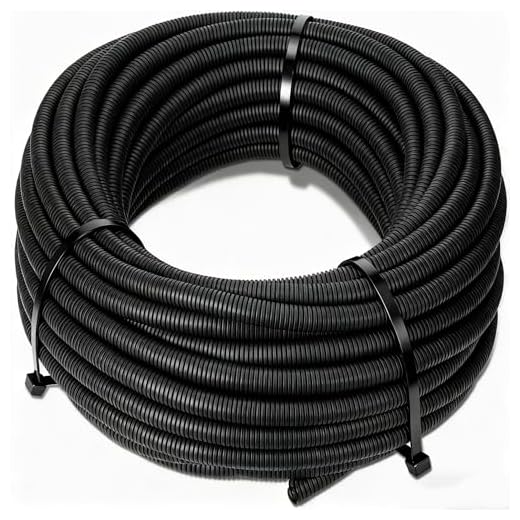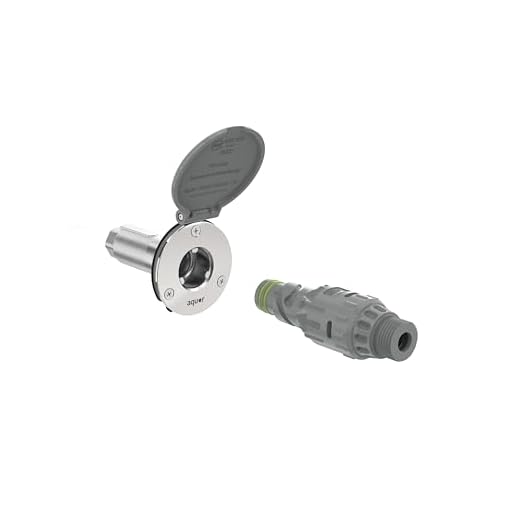



Using a reel system is one of the best methods to manage the flexible tubing effectively. It ensures that the cord is neatly wound and easily accessible when needed, cutting down on the time spent untangling knots after every use. Look for options that feature a sturdy frame and smooth mechanisms to enhance functionality.
Additionally, employing a storage solution that allows for quick coiling will provide convenience and preserve the integrity of the tubing. Wall-mounted hooks or storage bins with designated compartments can be an excellent choice. Make sure that the area has enough space to lay the tubing flat or coil it without kinks.
Regular maintenance also plays a vital role in avoiding complications. Inspect the flexible tubing for signs of wear, and keep it clean and free from dirt. A quick rinse after use can help elongate its service life and improve performance significantly. Moreover, storing the equipment in a dry place will help prevent damage caused by moisture.
Finally, proper handling during operation cannot be overstated. Avoid pulling or yanking the flexible tubing harshly, as this can lead to twists or breaks. Instead, gently guide it as you move around your work area. With these techniques, you’ll find that managing your cleaning equipment becomes a straightforward task.
Strategies to Prevent Kinks in Your Water Line
Utilise a reel for storage. Investing in a quality reel allows for organised coiling, significantly reducing the chances of knots forming during storage.
Regularly inspect for damage. Small cuts or abrasions can worsen over time. If you spot any issues, replace or repair the line immediately to maintain flexibility.
When using the equipment, avoid tight twists. Instead, lay the line loosely on the ground to prevent unnecessary stress and potential entanglement.
Employ a ‘figure-eight’ method for coiling. This technique ensures the material isn’t folded sharply, thereby promoting longevity and ease of use during the next session.
Consider using anti-twist connectors at both ends of the water line. These devices minimise the risk of twisting that leads to knots.
Store the hose indoors when not in use. Prolonged exposure to the elements can degrade the material, making it more susceptible to tangling. A dry, cool place is optimal.
Keep the working environment uncluttered. Ensure there are no obstacles that could snag the line while you’re in action. A clear path allows for smoother movements and reduces friction on the line.
Understanding the Causes of Hose Tangles
Avoiding entanglement begins with understanding its root causes. Here are some key factors contributing to the issue:
- Improper Storage: Coiling the pipeline incorrectly can lead to twists and knots. Always store it in a way that encourages straightness.
- Inadequate Length: Short lengths often cause tight bends, increasing the likelihood of kinks. Ensure your equipment has the necessary length to reach your cleaning area comfortably.
- Unbalanced Weight Distribution: If the reel or holder does not secure the line well, it may flop around, creating opportunities for tangles.
- Frequent Movement: Moving the apparatus without carefully managing the cord can lead to unforeseen twists forming, especially when navigating around obstacles.
- Surface Conditions: Uneven terrain or debris can snag the line, causing it to wrap around itself.
Identifying the Patterns
Recognising how these elements interact can aid in preventing snags. For example:
- Observing how the line behaves on different surfaces can inform better movement strategies.
- Noticing any consistent points of failure in storage methods can guide improvements.
By addressing these factors, I have successfully minimised the occurrence of entanglement in all my cleaning tasks. This not only makes the process smoother but also extends the lifespan of the equipment.
Selecting the Right Hose Length
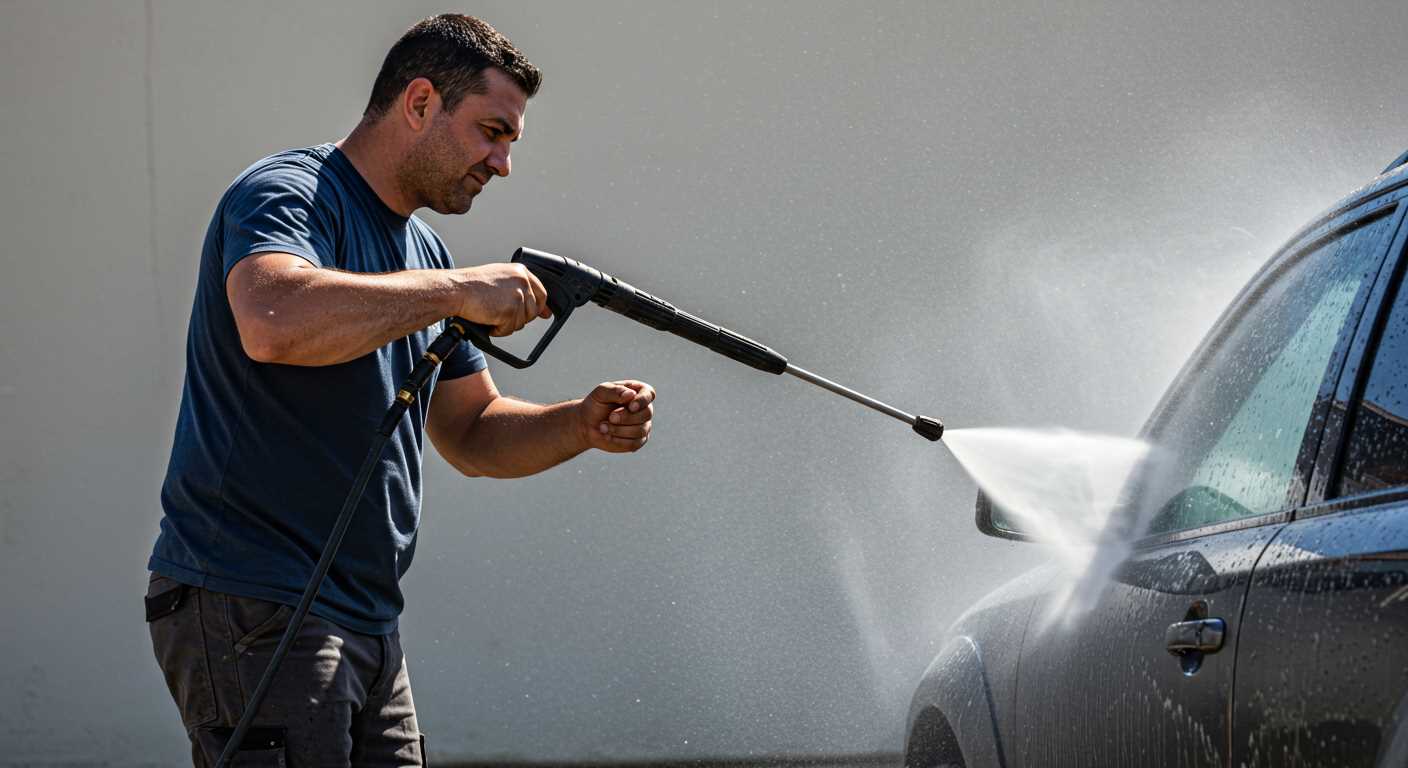
Choose a length that accommodates your work area while minimising excess. A length of 15 to 25 feet is generally sufficient for small to medium tasks, allowing for easy manoeuvrability without overwhelming slack.
If you often work in expansive spaces, consider a longer option, like 50 feet, while remaining mindful of the potential for kinks or knots. Longer hoses may increase the risk of entanglement, so plan your workspace and storage accordingly.
Assess the layout of your cleaning areas. If obstacles are present, shorter hoses can provide better control and prevent binding. Always think ahead about reaching difficult spots; having the correct length means fewer struggles with coiling and uncoiling.
When in doubt, I recommend testing various lengths to see what fits your needs. This can help determine the optimal size that balances accessibility and simplicity during operation.
Utilising Hose Reels for Storage
Investing in a hose reel simplifies storage while preventing kinks. A quality reel allows for easy retraction and extends the lifespan of your tubing by minimising bends and twists. Various models are available, including wall-mounted, portable, and retractable options. Choose based on your space and frequency of use.
Wall-Mounted Reels
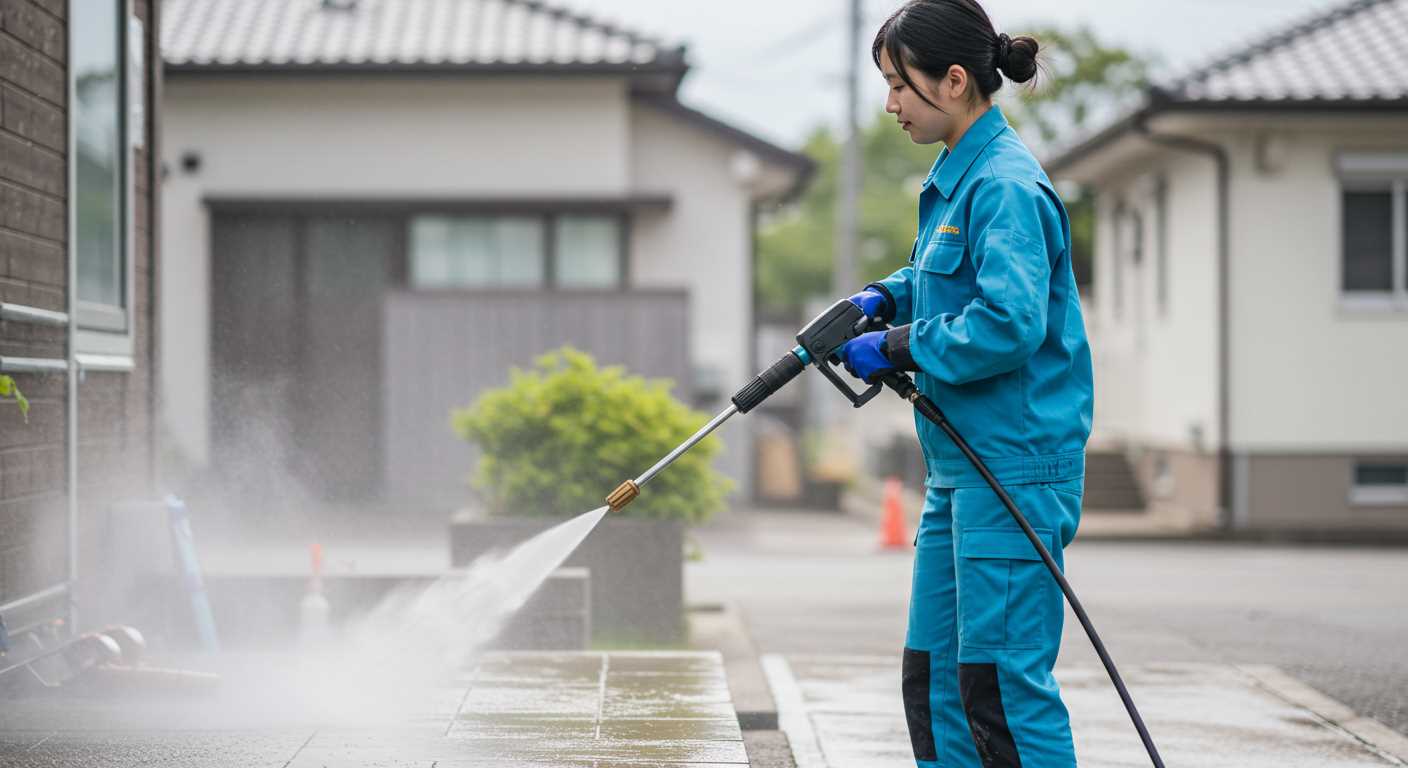
Wall-mounted reels remain stationary, conserving ground space. They are ideal for garages or sheds with limited room. Ensure installation at a height that allows for convenient access. Look for models with a locking mechanism to prevent accidental unwinding during operation.
Portable and Retractable Reels
For mobility, consider portable or retractable reels. These designs can be easily moved around job sites or stored away when not in use. Retractable reels often feature automatic winding systems, significantly reducing setup time. When selecting, ensure the reel’s capacity matches the length of your tubing to avoid over-winding.
Implementing Proper Winding Techniques
Use the figure-eight method for winding. Start by creating a loop and then twist it into a figure-eight pattern on the ground. This approach reduces kinks and allows for easier uncoiling.
When winding, ensure you’re not twisting the line excessively. Hold one end and guide the coil with your other hand, allowing the line to fall naturally into place. Avoid forcing it, as this can lead to tangles.
Store the tubing loosely rather than tight. Excessive tension can create memory in the material, resulting in trouble during later use. If using a reel, make certain the winding is even and not piled haphazardly.
Utilising a hook or bracket for storage can also streamline the process. Hang the coiled line vertically, which promotes airflow and reduces the risk of knots.
Regularly inspect the line for signs of wear or damage. Address issues like fraying early to prevent breaks or further complications when in use. Clear any debris or foreign objects from the coils to maintain functionality.
By consistently applying these techniques, managing your tubing becomes straightforward, enhancing your overall working experience.
Using Hose Protectors and Guides
Investing in high-quality protectors can significantly reduce the risk of kinks and knots. Anti-kink sleeves or spiral wraps offer a buffer that prevents twisting, especially at points where the line bends frequently. These add-ons also minimise wear and tear, extending the life of your tubing.
Choosing the Right Accessories
Consider purchasing guides designed specifically for managing your line effectively. Products such as nozzle holders and clamps can help maintain alignment, preventing snags during movement. If your setup includes hard surfaces, consider rubber mats or edges to ease movement across different terrains.
Maintaining Flexible Storage Solutions
Using portable guides allows you to direct the line during operation. They can be adjusted to your needs, ensuring that the line does not interfere with walking paths or project areas. Discreetly placed hooks or line guides near your storage will keep everything tidy and accessible for future use.
Avoiding Overextension During Use
To minimise the risk of tangles, monitor your movements and avoid stretching equipment to its limit. A few practical strategies are effective in preventing complications.
Maintain a Comfortable Work Radius
Keep the cleaning unit stationary and limit your reach. This allows for better control and reduces strain on the line.
- Identify your working area before starting to ensure you stay within a manageable distance.
- Position the cleaning unit in a spot that allows for optimal movement without needing to pull the line taut.
- Consider using extensions that can help extend reach without compromising flexibility.
Regularly Check for Obstructions
As you work, look out for any potential obstacles, such as curbs, ledges, or furniture. Avoiding these hazards helps maintain a smoother operation.
- Survey the area for any items that could catch or snag the line.
- Keep pathways clear to prevent unwanted tripping or tangling incidents.
- Adjust your position as needed to accommodate any changes in your surroundings.
These methods allow for a more pleasant experience, significantly reducing the likelihood of problems and ensuring optimal performance.
Regular Maintenance to Prevent Kinks
Periodically inspect your cleaning equipment’s tubing for wear and potential damage. Look for signs of cracking or fraying, as these can lead to weak spots that may kink under stress.
Keep the connectors and fittings clean and free from debris. Build-up affects sealing, which can lead to twisting. A simple wipe down can enhance the performance and longevity of your gear.
Store the equipment in a way that prevents sharp bends. Avoid placing heavy objects on top, which can compress and distort the shape of the tubing.
During usage, monitor the movement of the tubing. If it becomes twisted or folded, pause and readjust. This quick check can significantly reduce the risk of future kinks.
Regularly lubricate the connector points to ensure smooth operation. A light application of suitable lubricant can prevent wear and minimise friction-related issues.
Implement a cleaning routine to remove any mildew or residue build-up. Mold and dirt can affect flexibility, making the equipment more susceptible to tangling.
Storing the Hose Correctly After Use
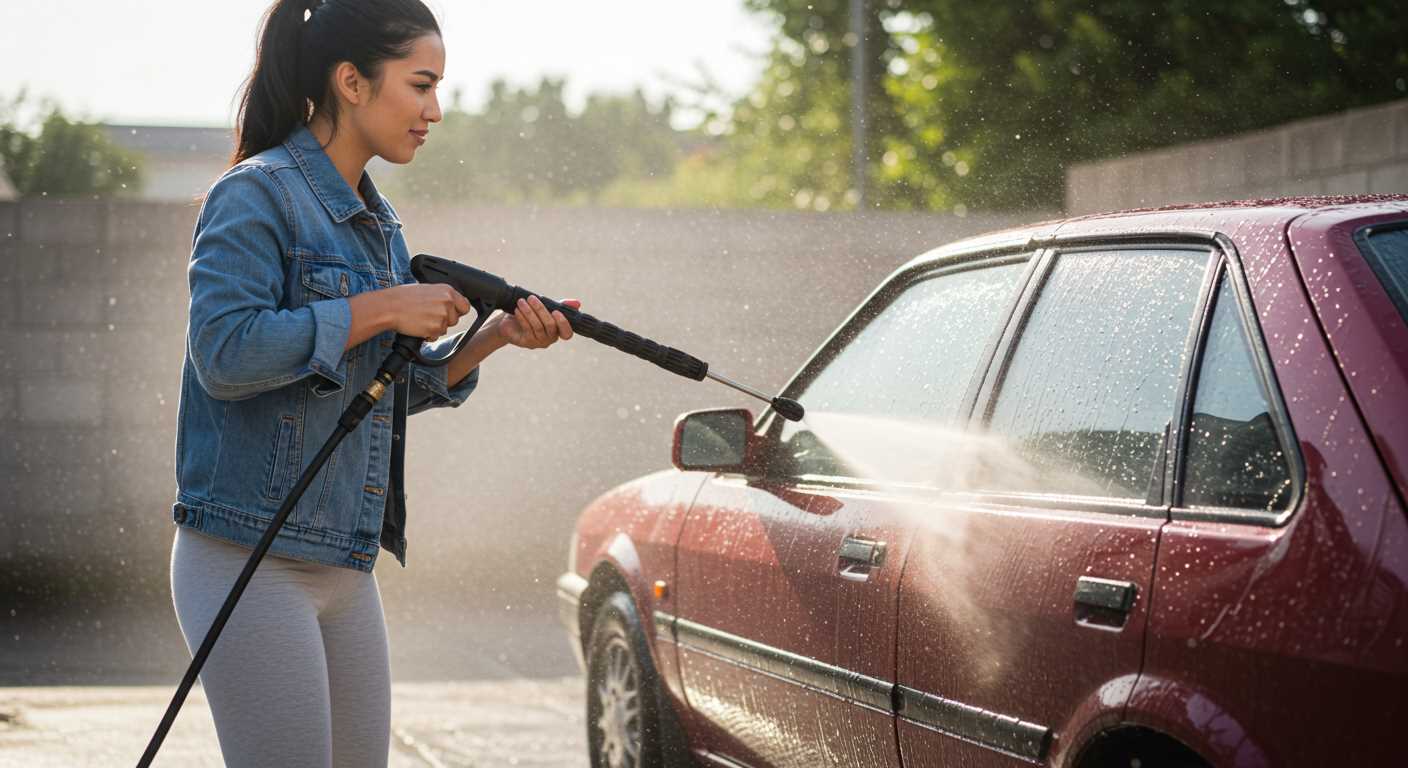
Coiling the water line properly ensures longevity and prevents future kinks. After completing the task, it’s crucial to drain any remaining fluid from the line to prevent mildew and degradation of materials. Lay the line flat before winding, avoiding any tight bends.
Recommended Storage Techniques
1. Use a Hose Reel: Place the line on a wall-mounted or portable reel. This keeps it neat and reduces the risk of tangles.
2. Hanging Solution: If a reel isn’t available, consider hanging the coiled line on hooks. Ensure it’s loosely coiled to avoid creating stress points.
3. Wrap with Velcro Straps: After coiling the line, secure it with Velcro straps to maintain its shape until the next use.
| Method | Advantages | Disadvantages |
|---|---|---|
| Hose Reel | Keeps the line organised, prevents kinks | Can be costly, needs installation |
| Hanging Hooks | Cost-effective, easy access | Requires wall space, potential for tangles if not done correctly |
| Velcro Straps | Portable, easy to use | Can loosen over time if not secured well |
4. Avoid Storage in Direct Sunlight: Keep the coiled line in a shaded area or within a storage bin to minimise exposure to UV rays that can deteriorate materials over time.
5. Regular Checks: Inspect the line for any signs of wear or damage during storage. Early detection can prevent significant issues later.



